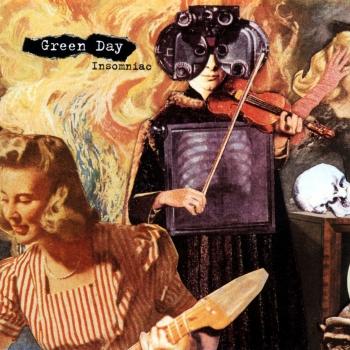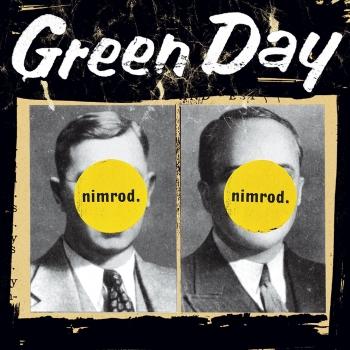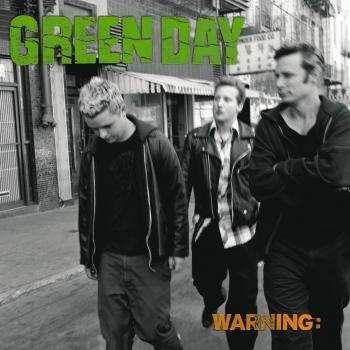
¡UNO! Green Day
Album info
Album-Release:
2012
HRA-Release:
31.10.2012
Album including Album cover
I`m sorry!
Dear HIGHRESAUDIO Visitor,
due to territorial constraints and also different releases dates in each country you currently can`t purchase this album. We are updating our release dates twice a week. So, please feel free to check from time-to-time, if the album is available for your country.
We suggest, that you bookmark the album and use our Short List function.
Thank you for your understanding and patience.
Yours sincerely, HIGHRESAUDIO
- 1 Nuclear Family 03:03
- 2 Stay The Night 04:36
- 3 Carpe Diem 03:25
- 4 Let Yourself Go 02:57
- 5 Kill The DJ 03:41
- 6 Fell For You 03:08
- 7 Loss Of Control 03:07
- 8 Troublemaker 02:45
- 9 Angel Blue 02:46
- 10 Sweet 16 03:03
- 11 Rusty James 04:09
- 12 Oh Love 05:03
Info for ¡UNO!
Just when you thought Green Day didn't make albums like this anymore – 12 blasts of hook-savvy mosh-pit pop, cut hot and simple with no operatic agenda – singer-guitarist Billie Joe Armstrong, bassist Mike Dirnt and drummer Tré Cool do three at once and issue them in rapid-fire installments. It's lunacy, of course, in what now passes for the music business.
In fact, Green Day's triple play with longtime co-producer Rob Cavallo is the way things used to be. In 1964 alone, the Beatles put out two albums, three singles and two EPs in Britain; the next year, the Rolling Stones whipped out five singles and three LPs in the U.S. ¡Uno! is Green Day's first studio album in three years, but they deliver it like late-breaking news, with mid-Sixties-guitar clamor, '77 velocity and no breathing room. Every track is written like a single – the glam-Jam jolt of 'Nuclear Family,' the Cheap Trick-style zoom and vocal sunshine of 'Fell for You' – then thrown at you like a grenade. From what I've heard so far of ¡Dos! and ¡Tré!, the same goes for them too.
After the Quadrophenia-like weight and worry of 2004's American Idiot and 2009's 21st Century Breakdown, ¡Uno! feels like plain relief. There are strong whiffs of Green Day's biggest seller, 1994's Dookie, in the honed buzz of Armstrong's and Jason White's guitars, Dirnt and Cool's airtight gallop, and Armstrong's lyric emphasis on girl troubles and starting the party that never stops. There is also a hipper, richer grip in the details. The martial clip of 'Carpe Diem' is an exuberant throwback to the Mod-era Who. 'Troublemaker' jumps like a dirty-glitter union of U2's 'Vertigo' and the Knack's 'My Sharona,' and has a liquid-fuzz guitar break that starts like the drone in David Bowie's 'Heroes' and ends with a vicious tremolo-bar spasm, as if Jeff Beck has taken over straight from the Yardbirds.
'Stay the Night' and 'Let Yourself Go' are the kind of pop-smart here's-my-fucking-problem miniatures Armstrong was writing like second nature when he, Dirnt and Cool were too young to drink (legally) where they gigged. But Armstrong is 40 now, married and a dad, and a lot of this ruckus sounds designed to drown out the time bombs ticking in his head and the maddening static outside. In 'Kill the DJ,' Armstrong turns the avenging spirit of the Smiths' 'Panic' ('Hang the DJ') on the noxious vapors of rabid talk radio, with more Taxi Driver in his threats and a catchy echo of the Clash's 'The Magnificent Seven' in the charge. Despite the jolt of Slade in the chorus, 'Loss of Control' isn't about sucking up every drop at the bar. It's a lonesome fury, spit out by a guy stranded in righteousness and stung by the betrayal. 'Hey, isn't that old what's-his-face/That I see walking down the street,' Armstrong sneers. 'We never had anything in common/And I never liked you anyway.'
'Where the hell is the old gang at?' Armstrong sings to the void in 'Rusty James.' Unlike most adult punks, though, he still has his original sidekicks, and their band in a new peak form. The action continues with ¡Dos! in November. Seven weeks with ¡Uno! will leave you in shape, and hungry, by then. (David Fricke, Rolling Stone)
In 1987 friends Billie Joe Armstrong and Mike Dirnt created a band named Sweet Children. Their first show of note took place in October of that year at Rod’s Hockey Pit in California. A year later John Kiffmeyer joined their band as a drummer and business manager, helping them create a local fan base. They were signed to Lookout! Records after the owner, Larry Livermore saw them play in one of their earlier shows. In order to avoid confusion with the band Sweet Baby, they changed their name. The band now known as Green Day was born. The name is supposedly related to their liking of marijuana.
Lookout! released their first album in 1990 named 39/Smooth. Included with the album was a letter supposedly from I.R.S. Records saying they had tried to sign Green Day. The band included a response saying they were loyal to Lookout!. Their response called I.R.S. “cheesy and washed up.” Later in 1990 Green Day released Slappy and Sweet Children. Also in 1990 John Kiffmeyer left the band to attend college. Tré Cool, the drummer from The Lookouts became Green Day’s temporary replacement. Once it was apparent that Kiffmeyer did not plan to return, Tré Cool took up the role as permanent drummer. In 1991, 1,039/Smoothed Out Slappy Hours, a compilation of 39/Smooth, Slappy and 1,000 Hours albums. For most of 1992 and 1993, the band was on tour which included shows in Europe. In 1992, their album Kerplunk sold fifty thousand copies in the United States. This was impressive for the independent punk band.
The success of Kerplunk drew interest from major record companies to Green Day. They decided to leave Lookout! records and sign with Reprise Records under the producer Rob Cavello. This move gave them the name sellouts in the eyes of many punk fans. This did not stop them as they went on to release Dookie. The album was recorded in three weeks and was an immediate success. The airtime given to “Longview,” “Basket Case,” and “When I Come Around” by MTV aided this success greatly. Every one of those songs hit number one on Modern Rock Tracks charts. That same year marked their nationwide tour accompanied by the bands Queercore and Pansy Division. Green Day played at both Lollapalooza and Woodstock 1994. The later performance jump started their publicity and recognition nationwide. In 1995, Dookie won the Grammy for Best Alternative Album.
In 1995, the single “J.A.R.” went right to the number one spot on the Modern Rock Track chart. The album Insomniac quickly followed in the fall of 1995. Insomniac was much darker than the band’s previous work. It did well, getting four of five stars from Rolling Stone Magazine. One of the songs on this album referred to the bands thought that they have gone too commercial in their music. Insomniac was not as successful as Dookie, but it still managed to sell seven million copies in the United States. It also won the band award for Favorite Artist, Favorite Rock Artist and Favorite Alternative Artist in 1996 at the American Music Awards. The video for “Walking Contradiction” was nominated for Best Video, Short Form and Best Special effects at the MTV Video Music Awards. After this, the band pulled out of a European tour, citing their exhaustion.
The band took a break in 1996 and picked up working on a new album in 1997. Right from the beginning, they agreed that the album had to be different than their previous work. The experimental album was labeled Nimrod, released in 1997. The album had a wider variety of music, punk rock, surf rock, ska and an acoustic ballad. Nimrod hit number ten on the charts due to the popularity of “Good Riddance (Time of Your Life).” This same song won an MTV Video award for Best Alternative Video. The video focused on major changes in the lives of a variety of people, overlaid by the guitar part. Other songs from Nimrod included “Nice Guys Finish Last,” “Hitchin’ a Ride,” and “Redundant.”
Warning was released in 2000, which followed the same style change as Nimrod. All Music Guide gave it a four point five out of five, saying that while not innovative, it was a satisfying endeavor. The Rolling Stone magazine was harsher in their rating of a three out of five. They cited the band’s previous hard core work and claimed that people would not want to listen to the lighter style of music from Green Day. Despite the hits, “Minority” and “Warning,” fans began to lose interest in the band because of the album Warning. Most of Green Day’s work had previously hit double platinum, Warning only warranted gold.
In 2001 at the California Music Awards Green Day was nominated for eight different awards, they won them all, those awards were Outstanding Album, Outstanding Punk Rock/Ska Album, Outstanding Group, Outstanding Male Vocalist, Outstanding Bassist, Outstanding Drummer, Outstanding Songwriter and Outstanding Artist. The release of warning was followed by their greatest hits album International Superhits! and an assemblage album called Shenanigans. These sold well, reaching platinum in the United States. Shenanigans was nominated for a Grammy for best Rock Instrumental Performance.
In the summer of 2003 the master tapes with all twenty songs for their new album tentatively called Cigarettes and Valentines was stolen from the studio. Instead of redoing the album, decided to make another, even better album. That same year, they worked with Iggy Pop on two songs on his new album Skull Ring. It was then that the band had serious talks to work out some issues they had with the other members. American idiot was the result and was released in 2004. It hit number one on the Billboard charts, marking the first time Green Day had such a rating. It was commonly called a “punk rock opera” following the “Jesus of Suburbia.” It won the Grammy in 2005 for Best Rock Album and took seven of eight awards in the 2005 MTV music awards.
This album contains no booklet.



















